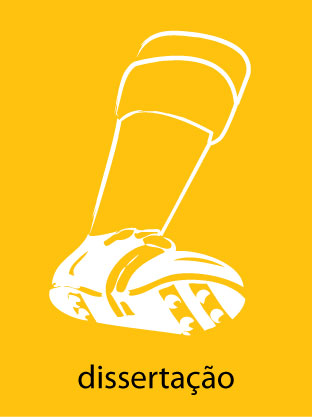No futebol, são evidentes as exigências físicas e psicológicas às quais os atletas são submetidos em busca de um melhor rendimento esportivo. Essas exigências são oriundas, principalmente, das cargas de treinamento, e por um calendário competitivo extenso e intenso, o que aumenta a necessidade de manutenção de níveis elevados de rendimento por longos períodos de tempo, dificultando a recuperação dos atletas de futebol profissional. O desequilíbrio entre o estresse e a recuperação pode ocasionar efeitos negativos como o overtraining e baixos níveis de motivação. Esse contexto pode levar os atletas de futebol profissional à desenvolverem a síndrome do burnout ao longo da temporada esportiva. Sendo assim, para melhor compreender a motivação, o overtraining e a síndrome do burnout em atletas de futebol profissional, o objetivo deste estudo foi investigar se a motivação e o overtraining podem predizer a síndrome do burnout em atletas de futebol profissional nos diferentes períodos ao longo da temporada esportiva. A amostra do estudo foi composta por 32 atletas de futebol profissional do sexo masculino, pertencentes à mesma equipe na cidade de Belo Horizonte, Minas Gerais, Brasil. Foram utilizados os instrumentos: o questionário de dados demográficos, a Escala de Motivação no Esporte (SMS), o Questionário de Estresse e Recuperação para Atletas (RESTQ-Sport 76) e o Questionário de Burnout para Atletas (QBA). As aplicações dos instrumentos psicométricos foram realizadas em locais reservados no centro de treinamento. As coletas de dados foram realizadas durante oito momentos da temporada esportiva de 2015, sendo eles: períodos basal (uma coleta), preparatório (duas coletas) e competitivo (cinco coletas). Realizou-se o teste de confiabilidade dos instrumentos psicométricos através do coeficiente do Alfa de Cronbach (α). Para as dimensões dos instrumentos psicométricos que apresentaram boa confiabilidade, verificouse a normalidade dos dados através do teste de Shapiro-Wilk. Os dados do estudo não apresentaram distribuição normal. A estatística descritiva foi composta pela mediana e intervalo interquartil (25-75%). Utilizou- se nas análises inferenciais o teste não paramétrico de Spearman e Friedman. Utilizou-se a regressão linear múltipla na tentativa de predizer a síndrome do burnout em diferentes períodos ao longo da temporada esportiva. Para todas as análises estatísticas foi utilizado: SPSS® (Statistical Package for Social Science) versão 20.0, para um nível de significância de p ˂ 0,05. Os resultados mostraram que 9 os valores gerais do Alfa de Cronbach (α) foram satisfatórios para as dimensões da motivação e do overtraining (α > 0,70). Porém, as dimensões desvalorização esportiva (α = 0,67) e reduzido senso de realização esportiva (α = 0,57) do QBA apresentaram valores do Alfa de Cronbach (α < 0,70) e foram excluídas das análises posteriores deste estudo. Os resultados apontam que o coeficiente de correlação entre os constructos psicológicos apresentaram-se sem correlação (0 < 0,20), fraca (≥ 0,20 a < 0,45), moderada (≥ 0,45 a < 0,70) e forte (≥ 0,70) entre os diferentes períodos da temporada esportiva. Na análise de regressão linear múltipla, os resultados apontam que no período basal a desmotivação foi capaz de predizer o burnout total em (R2 AJUSTADO = 0,37) e a exaustão física e emocional em (R2 AJUSTADO = 0,32) no período preparatório. Ainda no período basal, a desmotivação foi capaz de predizer o burnout total em (R2 AJUSTADO = 0,24) e a exaustão física e emocional em (R2 AJUSTADO = 0,35) no período competitivo. No período preparatório a desmotivação e o estresse específico são capazes de predizer o burnout total em (R2 AJUSTADO = 0,62) e a exaustão física e emocional em (R2 AJUSTADO = 0,68) no período competitivo. Conclui-se que a dimensão da motivação: desmotivação e do overtraining: estresse específico têm poder de predizer em atletas de futebol profissional a exaustão física e emocional e o burnout total. Em síntese, percebe-se que as variáveis psicológicas ficam mais latentes ao longo da temporada esportiva, aumentando o poder preditivo da síndrome do burnout nos diferentes períodos.
Palavras-chave: Motivação. Overtraining. Síndrome do burnout. Futebol profissional. Atletas.


